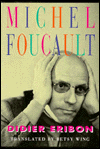ARTstor Digital Library has recently added more than 73,000 images from Magnum Photos International – a renowned group of documentary photographers.
"This collection relates to courses of study across the arts, humanities, social sciences, and beyond. The ARTstor community will now be able to access high-quality photographs from around the world, covering industry, society and people, places of interest, politics, news events, disasters and conflict, from the late 1930s to the present day. From the Spanish Civil War to the Gulf War, from Marilyn Monroe to Paul Newman, from John Updike to Toni Morrison, from Christian Dior to Oscar de la Renta, from the fall of the Berlin Wall to the crisis in Chechnya, these images capture wars, celebrities, authors, fashion designers, and defining moments in our shared history.

Magnum Photos International, Inc., is a cooperative founded just after World War II and owned today by its 80 prominent photographers, including Henri Cartier-Bresson, Robert Capa, Eve Arnold, Elliott Erwitt, Josef Koudelka, Rene Burri, Hiroji Kubota, Susan Meiselas, Martin Parr, Alex Webb and dozens of others. Magnum was created from the belief that photographers must have a point of view in their imagery that transcends any formulaic recording of contemporary events. "Magnum is a community of thought, a shared human quality, a curiosity about what is going on in the world, a respect for what is going on, and a desire to transcribe it visually," said Henri Cartier-Bresson." Read more on ARTstor’s Magnum Photos page.




